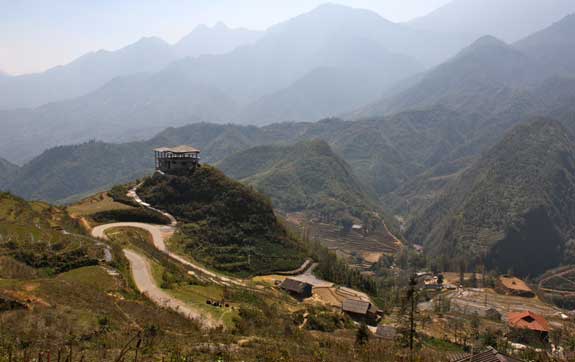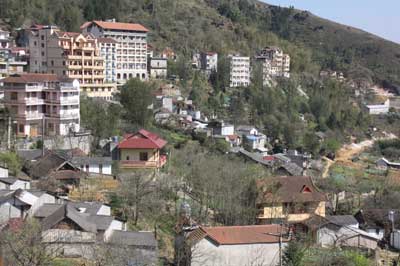Monday Escape: Sapa, Vietnam

Today’s destination is one with very few expats and very few expat opportunities, except for perhaps a few English teachers and NGO workers, but it’s a popular stop with travelers and those living in Asia, partly for the great contrasts you’ll experience there.
Sapa, Vietnam (often spelled Sa Pa) is in the hills north of Hanoi, and it’s a common side trip for those visiting the Vietnamese capital. Two major things it has in its favor are its elevated location gives it a moderate climate that can be very welcome mixed in with a tour of searing-hot Vietnam, and also that the town is dominated by ethnic minorities, so it differs culturally from the rest of Vietnam as well.
The vibe in Sapa
 With its location not far from the border with China, it’s not surprising to hear that it has much in common with the peoples just on the other side of that border. In fact, while 90% of China is basically the same ethnic group, there are over 50 small minorities, and most of those are clustered in the region in the southwest of the country. So the four main minority groups found in Sapa have much in common with similar groups in China.
With its location not far from the border with China, it’s not surprising to hear that it has much in common with the peoples just on the other side of that border. In fact, while 90% of China is basically the same ethnic group, there are over 50 small minorities, and most of those are clustered in the region in the southwest of the country. So the four main minority groups found in Sapa have much in common with similar groups in China.
For the visitor, Sapa consists primarily of one long major street that winds back in the other direction in the middle of town. There are many small streets and alleys that run between the sections of the main street, and these are where you’ll find the outdoor market that is the center of most of the action.
There are also dozens of tourist restaurants and hotels spread all over the city, most offering excellent views of the valley. Fortunately, the setting is quite lovely in every direction, so all rooms that are elevated enough will overlook a prime view. In fact, many hotels are built more or less into the side of the mountain, so they might be 10 or 12 levels, with only a few rooms on each level.
The main attraction for most visitors is actually the trekking and outdoor activities available. There are a few ethnic villages that are a short walk from the town center, and several others that are part of daily tours of the area. Unfortunately, the more accessible of these tours tend to feel very artificial, so it’s not a real picture of how these people live. In other words, you walk along a set trail that is lined with little souvenir shops set up by the locals, so you get an idea of the crafts they are known for, but not much else.
The other controversial thing about visiting Sapa is that the street merchants tend to be very aggressive. You’ll walk along the main road and frequently young girls will come up to you asking if you’ll buy a bracelet or necklace (in surprisingly good English). Even if you say no, they’ll approach you the next time they see you and insist that you promised you’d buy from them next time. It can be frustrating, and the fact that enough people give in and buy things they don’t want, just encourages them to keep it up. If you get good at literally saying no and ignoring them, it’s still a pleasant place to visit for a few days.
The cost of living in Sapa
Probably because it’s a resort city more than anything else, Sapa is actually a little more expensive than Hanoi. Hotels start at around US$10 per day, which is very cheap compared to other countries, but you can actually find cheaper rooms in Hanoi. Meals also start at around US$2 each in Sapa, and US$4 is more common for one of the local specialties. Unlike most of the rest of Vietnam, there aren’t endless sidewalk plastic-furniture local restaurants from which to choose, so the tourist restaurants are your best bet.
Most people arrive in Sapa on an overnight train from Hanoi, which stops at a station about 40 kilometers down the mountain. If you book a hotel in advance there’s a very good chance that they will hire a driver to hold a sign with your name and will help put you in a van headed to your place. The vans are cheap, and worth it to get door to door transportation instead of being dropped off in the middle of town and climbing up and down hills looking for a room.
